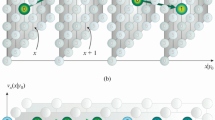Abstract
This paper presents a cooperative optimization algorithm for energy minimization in a general form. Its operations are based on parallel, local iterative interactions. This algorithm has many important computational properties absent in existing optimization methods. Given an optimization problem instance, the computation always has a unique equilibrium and converges to it with an exponential rate regardless of initial conditions. There are sufficient conditions for identifying global optima and necessary conditions for trimming search spaces. To demonstrate its power, a case study of stereo matching from computer vision is provided. The proposed algorithm does not have the restrictions on energy functions imposed by graph cuts [1,2], a powerful specialized optimization technique, yet its performance was comparable with graph cuts in solving stereo matching using the common evaluation framework [3].
Access this chapter
Tax calculation will be finalised at checkout
Purchases are for personal use only
Preview
Unable to display preview. Download preview PDF.
Similar content being viewed by others
References
Boykov, Y., Veksler, O., Zabih, R.: Fast approximate energy minimization via graph cut. IEEE TPAMI 23, 1222–1239 (2001)
Kolmogorov, V., Zabih, R.: What energy functions can be minimized via graph cuts? IEEE TPAMI 26, 147–159 (2004)
Scharstein, D., Szeliski, R.: A taxonomy and evaluation of dense two-frame stereo correspondence algorithms. IJCV 47, 7–42 (2002)
Zitnick, C.L., Kanade, T.: A cooperative algorithm for stereo matching and occlusion detection. IEEE TPAMI 2 (2000)
Marr, D., Poggio, T.: Cooperative computation of stereo disparity. Science 194, 209–236 (1976)
Atkinson, K.: Computers and Intractability. Kluwer Academic Publishers, San Francisco (1989)
Michalewicz, Z., Fogel, D.: How to Solve It: Modern Heuristics. Springer, New York (2002)
Kirkpatrick, G.C., Vecchi, M.: Optimization by simulated annealing. Science 220, 671–680 (1983)
Hinton, G., Sejnowski, T., Ackley, D.: Genetic algorithms. Cognitive Science, 66–72 (1992)
Lawler, E.L., Wood, D.E.: Brand-and-bound methods: A survey. OR 14, 699–719 (1966)
E.G.C. Jr.: Computer and Job-Shop Scheduling. Wiley-Interscience, New York (1976)
Szeliski, R., Zabih, R.: An experimental comparison of stereo algorithms. In: Triggs, B., Zisserman, A., Szeliski, R. (eds.) ICCV-WS 1999. LNCS, vol. 1883, pp. 1–19. Springer, Heidelberg (2000)
Huang, X.: A general framework for constructing cooperative global optimization algorithms. In: 4th International Conference on Frontiers in Global Optimization (2003)
Huang, X.: Cooperative optimization for solving large scale combinatorial problems. In: Grundel, D., Murphey, R., Pardalos, P. (eds.) 4th International Conference on Cooperative Control and Optimization, Destin, Florida, U.S.A. (2003)
Rosenfeld, A., Hummel, R., Zucker, S.: Scene labelling by relaxation operations. IEEE Transactions on System, Man, and Cybernetics SMC-6, 420 (1976)
Hopfield, J.: Neural networks and physical systems with emergent collective computational abilities. Proceedings of the National Academy of Sciences 79, 2554–2558 (1982)
Author information
Authors and Affiliations
Editor information
Editors and Affiliations
Rights and permissions
Copyright information
© 2004 Springer-Verlag Berlin Heidelberg
About this paper
Cite this paper
Huang, X. (2004). Cooperative Optimization for Energy Minimization in Computer Vision: A Case Study of Stereo Matching. In: Rasmussen, C.E., Bülthoff, H.H., Schölkopf, B., Giese, M.A. (eds) Pattern Recognition. DAGM 2004. Lecture Notes in Computer Science, vol 3175. Springer, Berlin, Heidelberg. https://doi.org/10.1007/978-3-540-28649-3_37
Download citation
DOI: https://doi.org/10.1007/978-3-540-28649-3_37
Publisher Name: Springer, Berlin, Heidelberg
Print ISBN: 978-3-540-22945-2
Online ISBN: 978-3-540-28649-3
eBook Packages: Springer Book Archive




